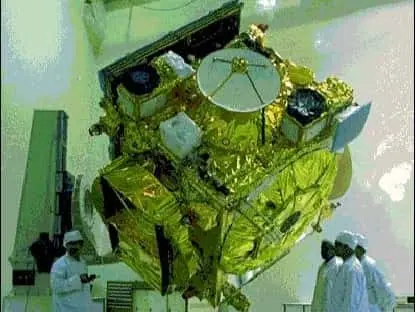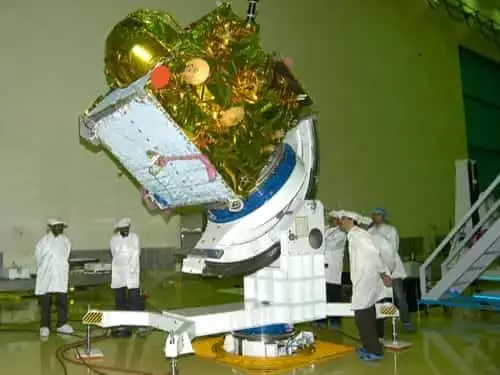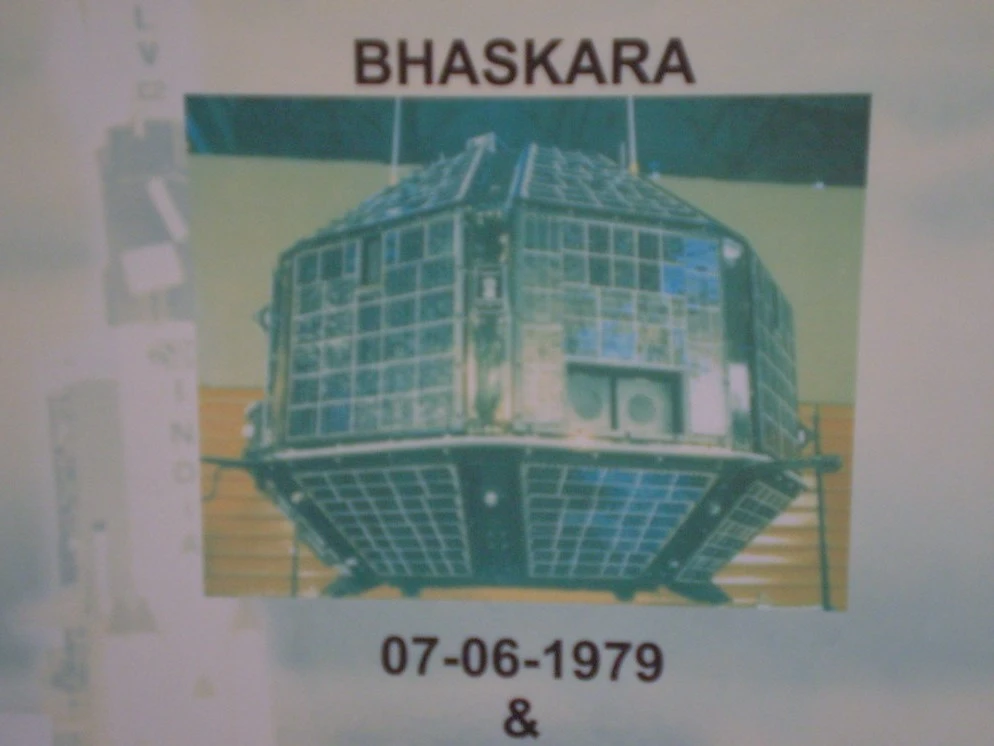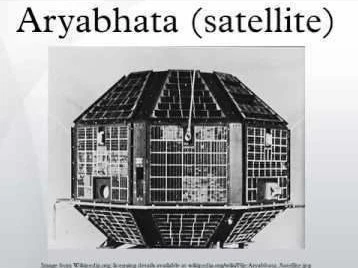MILESTONES

1992: India launches INSAT-2A
INSAT-2A was India's first multipurpose satellite. It was built by ISRO and launched on July 10, 1992, on an Ariane 4 rocket from Kourou, French Guiana. The satellite was placed in a geostationary orbit at 74° East longitude.
INSAT-2A had three main payloads:
- >> A Very High Resolution Radiometer (VHRR) for meteorological observations
- >> A Satellite Based Search and Rescue (SARSAT) transponder
- >> A communication payload with 16 C-band transponders for telephony, television broadcasting, and data communication
INSAT-2A was a very successful mission, and it provided a wide range of services to India and other countries in the region. The satellite was used for weather forecasting, disaster warning, telecommunications, and television broadcasting. It also played a vital role in India's search and rescue operations.
INSAT-2A was decommissioned on May 30, 2002, after completing its design life of seven years. However, it continued to provide limited services until October 2002.
INSAT-2A was a major milestone for India's space program. It demonstrated India's ability to design, build, and launch complex space missions. The satellite also played a vital role in India's economic and social development.

1984: PSLV
The Polar Satellite Launch Vehicle (PSLV) is an expendable launch vehicle developed by the Indian Space Research Organisation (ISRO). It is India's most reliable and versatile launch vehicle, and has been used to launch a wide range of satellites, including Earth observation satellites, navigation satellites, and communication satellites.
The PSLV has a four-stage configuration, and can launch satellites weighing up to 1,750 kg into Sun-Synchronous Polar Orbits (SSPO) at an altitude of 600 km. It can also launch satellites weighing up to 1,425 kg into Geosynchronous Transfer Orbits (GTO).
The PSLV has been used to launch over 250 satellites from over 30 countries. Some of the notable satellites that have been launched by the PSLV include:
- >> Cartosat-2 series satellites: Earth observation satellites for high-resolution imaging
- >> Resourcesat-2 series satellites: Earth observation satellites for monitoring natural resources
- >> Oceansat-2 series satellites: Earth observation satellites for monitoring the oceans
- >> IRNSS series satellites: Navigation satellites for India's regional navigation system
- >> Chandrayaan-1 and Chandrayaan-2: Lunar exploration missions
- >> Astrosat: Space telescope for astronomy
The PSLV has a success rate of over 95%, making it one of the most reliable launch vehicles in the world. It is also a relatively low-cost launch vehicle, which makes it a popular choice for commercial and government satellite launches.
The PSLV is a critical asset for India's space program, and has played a major role in the country's growing space capabilities. It is expected to continue to be a key launch vehicle for India in the years to come.

1982: India launches INSAT-1A
INSAT-1A was India's first multipurpose domestic satellite. It was launched on April 10, 1982, by NASA using a Delta 3910 rocket with a PAM-D upper stage. The satellite was placed in geostationary orbit at a longitude of 74° east.
INSAT-1A was designed to provide a variety of services, including:
- >> Telecommunications: INSAT-1A had 12 C-band transponders that could be used for a variety of telecommunications services, including telephone, telegraph, and data transmission./li>
- >> Television broadcasting: INSAT-1A had two S-band transponders that could be used for television broadcasting.
- >> Meteorological services: INSAT-1A had a Very High Resolution Radiometer (VHRR) that could be used to take images of the Earth's surface and atmosphere. These images could be used to monitor weather conditions, predict weather patterns, and provide early warning of natural disasters
INSAT-1A was a very successful mission. It provided vital telecommunications and broadcasting services to India for many years. It also played a key role in India's meteorological program.
However, INSAT-1A experienced a failure of its attitude control system in September 1983, and was decommissioned. It was replaced by INSAT-1B, which was launched in August 1983.
Despite its short operational life, INSAT-1A was a landmark mission for India's space program. It demonstrated India's ability to design, develop, and launch complex space missions. It also ushered in a new era of telecommunications, broadcasting, and meteorological services in India.

1979: India launches Bhaskara-I
Bhaskara-I was the first experimental remote sensing satellite built by the Indian Space Research Organisation (ISRO). It was named after Bhaskara-I, a renowned Indian mathematician from the 7th century. Bhaskara-I was launched on June 7, 1979, from the Volgograd Launch Station in Russia using a Soviet Intercosmos launch vehicle.
The primary mission of Bhaskara-I was to gather data for hydrology, oceanography, forestry, and telemetry. The satellite carried two television cameras operating in visible (600 nanometers) and near-infrared (800 nanometers) wavelengths, a satellite microwave radiometer (SAMIR) operating at 19 and 22 GHz frequencies, and an X-ray sky monitor operating in the 2-10 keV energy range.
Bhaskara-I was a successful mission, and it returned a wealth of data that was used for a variety of scientific studies. For example, the data from the television cameras was used to study snow cover, cloud cover, and vegetation cover. The data from SAMIR was used to study ocean surface temperature, sea ice cover, and atmospheric water vapor content. The data from the X-ray sky monitor was used to study transient X-ray sources and long-term spectral and intensity changes in X-ray sources.
Bhaskara-I re-entered the Earth's atmosphere on August 16, 1989. However, its legacy continues to live on. The data that it collected helped to lay the foundation for India's current remote sensing satellite program, which is one of the most advanced in the world.
The Bhaskara-I mission was a significant milestone for India's space program. It demonstrated India's ability to design, develop, and launch complex space missions. It also helped to advance scientific knowledge about the Earth and its environment.

1975: India launches Aryabhata
The Aryabhata mission was India's first satellite mission. The satellite was named after the famous Indian astronomer and mathematician Aryabhata. It was launched on April 19, 1975, from the Kapustin Yar Cosmodrome in the Soviet Union, using a Kosmos-3M rocket.
Aryabhata was a small satellite, weighing only 360 kilograms. It was equipped with three scientific instruments:
- >> An X-ray telescope to study astronomical X-ray sources
- >> A gamma ray detector to study cosmic rays
- >> A solar ultraviolet spectrometer to study the Sun's ultraviolet radiation
Aryabhata's mission was to conduct scientific experiments in X-ray astronomy, aeronomy, and solar physics. The satellite operated for five days before developing a power failure. However, it was still able to collect a significant amount of data during that time.
The Aryabhata mission was a success in several ways. First, it demonstrated India's ability to design, build, and launch a satellite. Second, it provided valuable scientific data about the Sun, stars, and cosmic rays. Third, it inspired a new generation of Indian scientists and engineers to pursue careers in space science.
The Aryabhata mission is a significant milestone in the history of the Indian space program. It paved the way for India's subsequent success in space exploration, including the Chandrayaan and Mangalyaan missions.